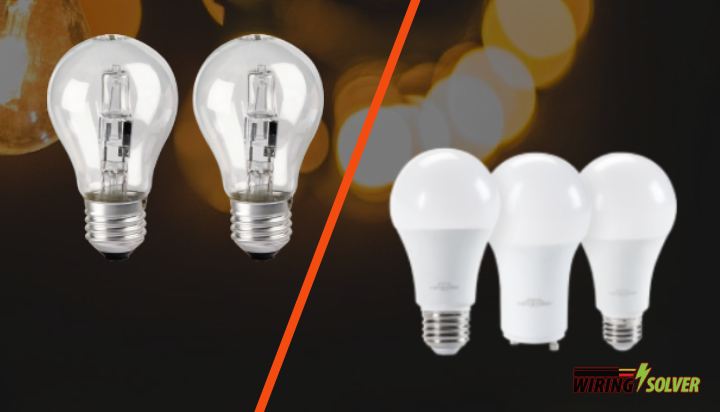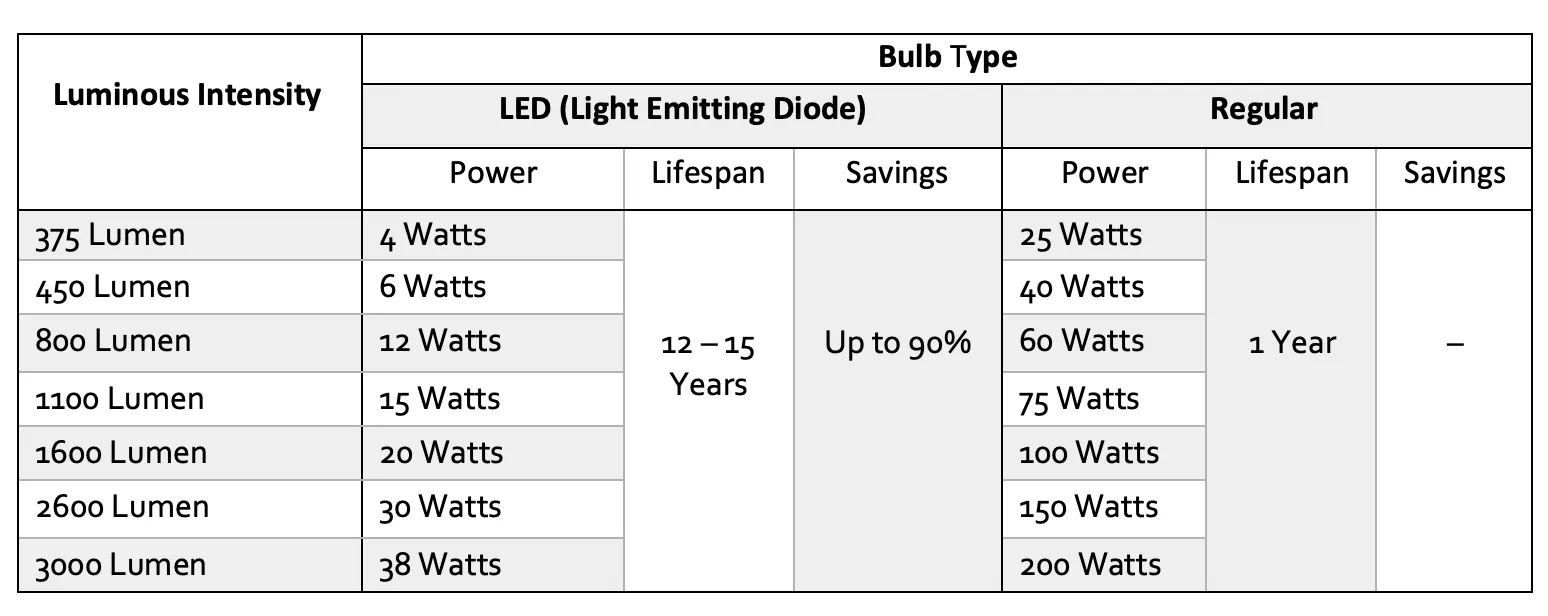Regular light bulbs are still used in many areas. But, are LED bulbs brighter than regular bulbs?
There is no definite answer to this question unless the various ratings of the light bulb are specified. But yes, it is possible for LED light bulbs to be brighter than regular light bulbs. But it will depend on the Lumen rating of the bulb and several other specifications.
So, without further ado, let’s delve into the topic of regular and LED light bulbs and the factors which make them bright. This will help you take the right decision when buying a light bulb.

What Makes a Light Bulb Bright?
In the past, we thought light bulbs were brighter based on how much energy, or watts, they use. But now it makes more sense to buy lights based on how much light they provide.
When buying a light bulb, the brightness should be determined by comparing lumens instead of watts. A lumen is a measure of the amount of brightness of a lightbulb. The higher the number of lumens, the brighter the lightbulb.
Lumens measure how much light you are getting from a bulb. More lumens mean it’s a brighter light; fewer lumens mean it’s a dimmer light.
The brightness, or lumen levels, of the lights in your home, may vary widely, so here’s a rule of thumb:
- A 40-watt (W) incandescent bulb gives you about 450 lumens.
- A 60-watt (W) incandescent bulb gives you about 800 lumens.
- A 75-watt (W) incandescent bulb gives you about 1100 lumens.
- A 100-watt (W) incandescent bulb gives you about 1600 lumens.
- A 150-watt (W) incandescent bulb gives you about 2600 lumens.
Another less obvious specification you might want to consider is the light output ratio (LOR), which tells us what percentage of light gets lost inside a fixture.
You want to consider a fixture with a high LOR percentage, so use your bulbs’ brightness and electricity most efficiently.
How Can I Calculate Lumens Per Watt?
For novices who don’t know the right way to measure the lumens per watt, then just follow the given direction.
Equation
Lumen / Wattage = Lumens Per Watt.
For example,
If your LED bulb has 20 watts with 1600 lumen then,
Lumens Per Watt = 1600 / 20 = 80 LM/W.
Then again, suppose your regular bulb consumes 100 watts with 1600 lumen then,
Lumens Per Watt = 1600 / 100 = 16 LM/W.
What Is the Brightness of LED Bulbs & Regular Bulbs?
Light learning about the lumen and wattage, look at the given regular bulb and LED brightness chart given below.

As you can see, it simply explains who’s the brighter by considering the power and intensity. In general, the regular bulb requires higher wattage to provide better brightness.
On the other hand, the LED light needs less power to give higher brightness to a room.
In fact, they have higher resistance which is the reason why LED lights stay on, unlike regular bulbs. And so, the LED wins due to its brightness intensity.
So, if you ask what type of light bulb is the brightest, the answer would be LED due to its efficiency which costs 5x less and only needs low power than regular lights.
Are there Other Factors That Contribute to the Brightness of a Light Bulb?
There are other factors to consider that affect the brightness of a light bulb including the optics, lens, reflectors, and the fixture itself.
To control the light beam, an optic is placed on top of the bulb’s lens. It can prevent some light from passing through, reducing the brightness of the bulb.
Reflectors sit on top of a light fixture and are also used to alter the beam of light coming from the bulb, which can also dull the brightness of the light depending on its application.
Another consideration is the height of the light itself. The higher up on any mount or surface the light sits, the less bright it will seem. When the light is placed lower, the light will be more concentrated making it seem brighter.
Lastly, the color temperature of the light also affects a bulb’s brightness. Lights come in a variety of colors that can be found on the visible color scale.
A light that shines in the center of the spectrum and is white or light blue will be brighter than one that is red or orange. Blue, purple, and ultraviolet light are at the other end of the spectrum and reduce the brightness of a bulb.
Frequently Asked Questions (FAQs)
1. What is the difference between LED and an incandescent light bulb?
To put it simply, the LED bulb lasts longer, spends less energy, and provides good lighting than incandescent light. LED strips be wired to a toggle switch as well.
2. Is it worth changing all bulbs to LED?
Nearly all experts suggest changing bulbs (standard, halogen, or incandescent lights) to LEDs or CFLs type. The reason is that the LED bulb’s lasting ability to show better lighting that spends less energy.
3. Do LEDs attract bugs?
No! As LED bulbs give less to no UV light or heat when turning on, they don’t attack bugs. Plus, they produce better wavelengths of light than other bulbs.
Summary
Now that you know about the factors which make a light bulb bright, as well as the method of how to identify a bright light bulb, you can easily take the appropriate decision for your household.
Make sure to pick a bulb with the better build quality and of a brand. You may find cheaper light bulbs that may promise good performance but will fail in the long run. Therefore, quality matters a lot.




![What Is A Conductor Of Electricity? [Explained]](https://wiringsolver.com/wp-content/uploads/2021/12/What-Is-A-Conductor-Of-Electricity.jpeg)

